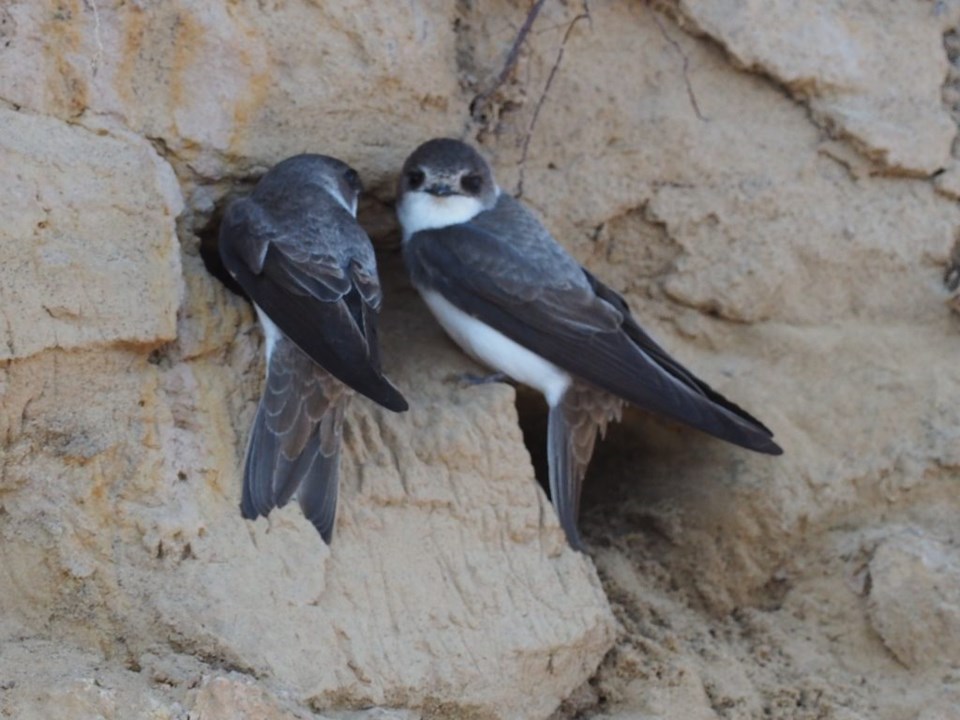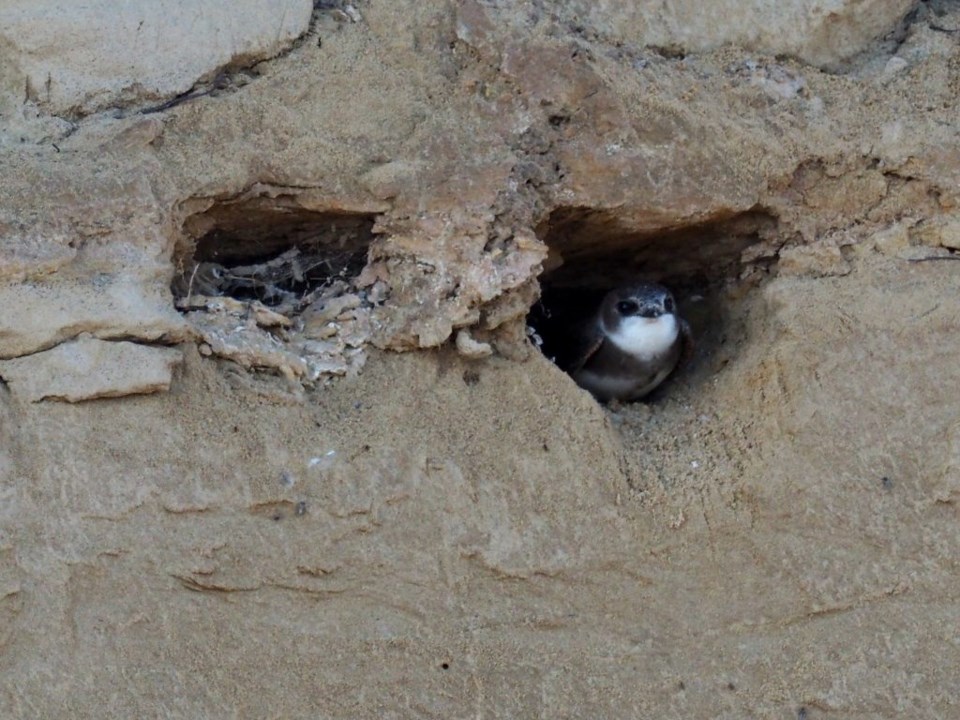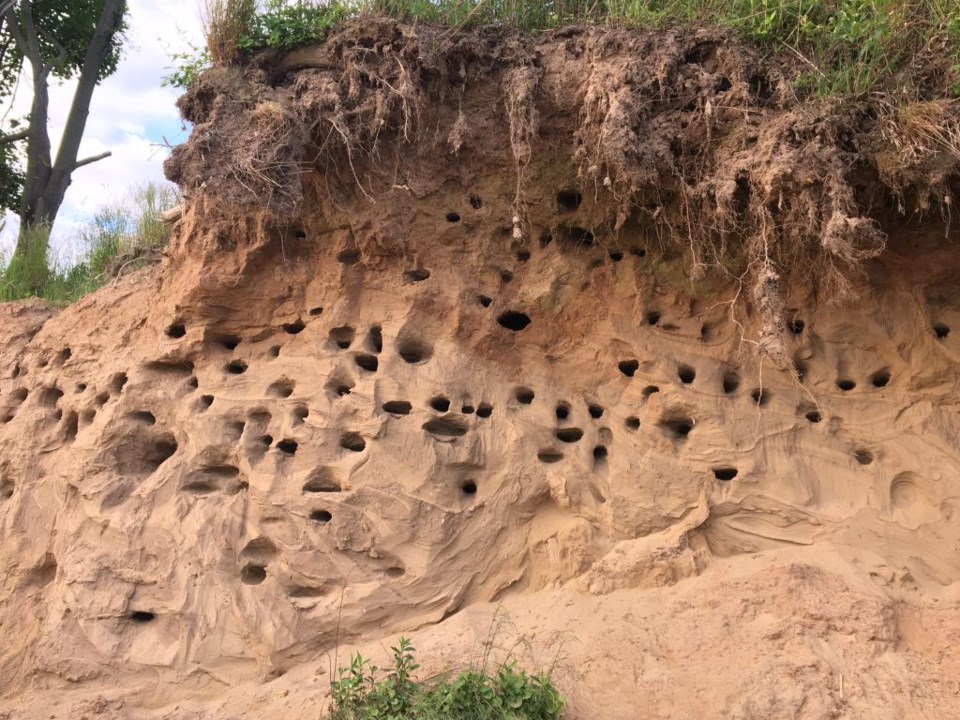
Many of us have heard the legend of the Swallows of Capistrano, how each year these swallows travel 10,000 kilometres from their wintering place in South America to the small town of San Juan Capistrano in California, specifically to the Mission Church located there. In fact, it has become a widely known international tourist attraction for many years.
Fortunately our small town, a major tourist destination already, does not have to depend on this type of attraction, but we do have a similar occurrence at the Niagara Shores Park. A lot of locals are familiar with this occurrence and, it may, with Parks Canada’s plan to reopen the park to automobile traffic, become more generally familiar to a wider group in the future.

Each year, a species called bank swallows also migrates from Central and South America and arrive at the shore of Lake Ontario to nest and breed for several months of the year. Bank swallows (Riparia riparia ) are a small swallow that feed on flying insects. They have brown upper parts, white underparts and a distinctive dark breast band. Anyone who has walked the area along the shore will be aware of the dense clouds of flying insects that emerge there in early May. Bank swallows, when they arrive, find an abundance of their favourite food. They catch their prey on the wing, and it is fascinating to watch fairly large numbers of these swallows flying out over the shore and the lake to feed. They perform amazing aerial acrobatics in flight, making them quite difficult to photograph when in the air.
Another reason for their return to this location, however, is the high bank that exists along this section of shoreline. Unlike their Capistrano cousins that build nests out of mud, our bank swallows create a nest by digging into this bank of soil along the shoreline. The bank best suited to this endeavour has a slope of greater than 70 per cent, which is found at Niagara Shores. To the casual observer, walking along the shore of the lake, the holes along the bank are quite obvious and numerous. Bank swallows are referred to as colonial nesters because of the large numbers of nests created in a particular area. The nest, or occupied burrow, on average, is 71 cm deep. The nest itself will have twigs, feathers, grasses, etc. in a small chamber at the end of the burrow. The eggs and the chicks are protected from heat changes, predation and harsh weather.
Although I’m sure many of these nests would be reused on a yearly basis, some swallows have been observed pecking away at the bank to create a new nest, while the majority seem busy cleaning out the old ones, kind of like opening up the cottage for the season. It’s quite humorous to watch a swallow enter the hole, and then see the dirt being swept out as they prepare the nest. This is supposedly accomplished with their feet, sweeping backwards.
Bank swallows are on the protected list and, according to Parks Canada, “the bird has lost 98 per cent of its Canadian population over the last 40 years.” Because of this protected status, it will become one of the factors about how the area will become more open to visitors. As most of us who frequent the area are aware, the banks along that shoreline have been subject to a high degree of erosion. They are constantly collapsing. This is easily observed with the number of large trees that have been brought down along the shore by the collapsing bank, and the ones that now appear delicately balanced and soon to fall. The collapsing banks also contribute to the possible decrease in suitable nesting sites.
As the swallows are most active between mid-April and August, any increase in visitation during that period may have an effect on the future numbers of bank swallows at the site. Concern due to human activity can already be seen with some visitors seemingly finding it necessary to carve their initials, names or symbols in the banks near the swallow holes.

There are two other species of swallow that I’ve observed in the area as well. The one that I spotted earlier in the spring at Niagara Shores was identified as a northern rough-winged swallow. It also breeds in holes or crevices along banks but is not a colonial nester like the bank swallow.
The other species, the tree swallow, I have seen quite commonly in the area of the Niagara College ponds. There, you can see them using the nesting boxes that have been constructed and placed specifically for them.
Two other species found locally would be barn swallows and possibly cliff swallows, on sections of the Niagara Escarpment. Definitely something else to be on the lookout for in our area.


